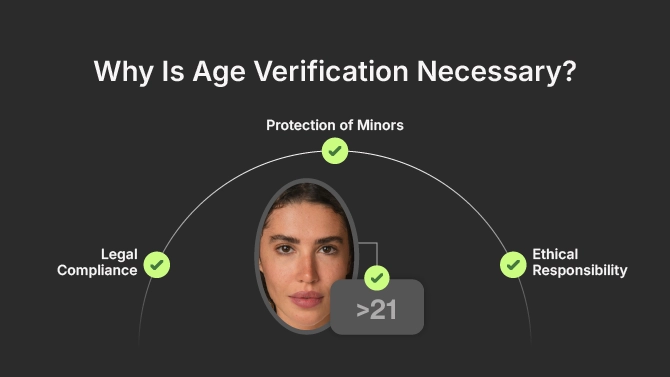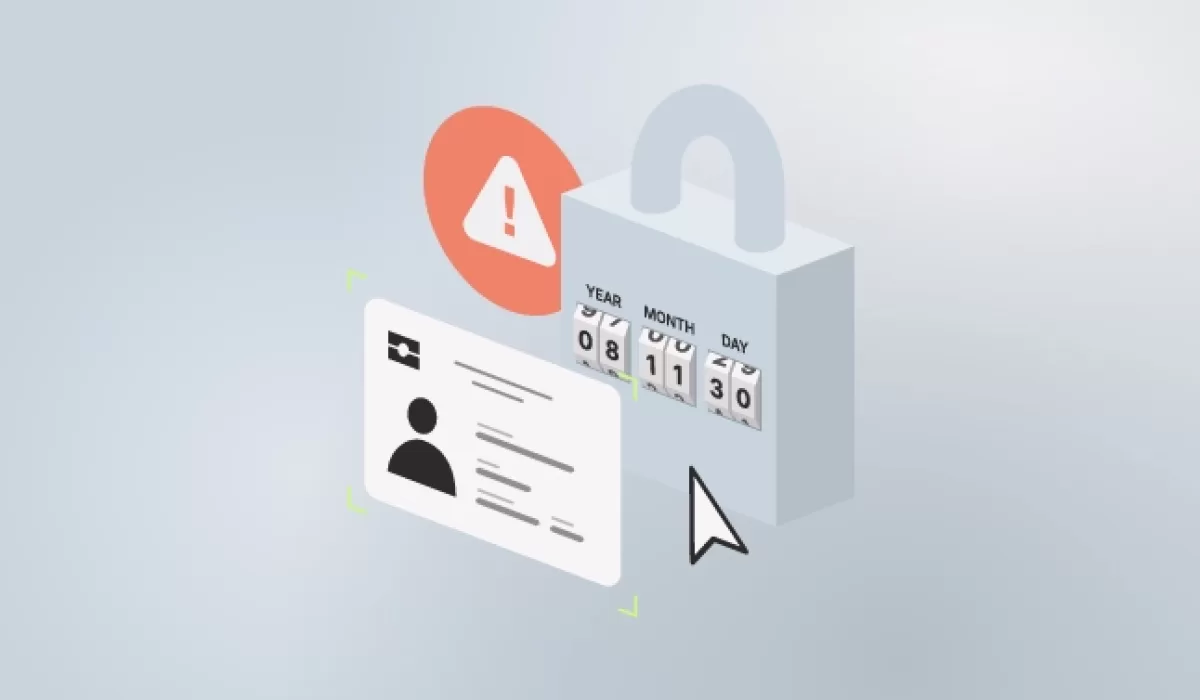Age verification is the process of confirming a user’s age before granting access to specific products, services, or content. It plays a crucial role in safeguarding online platforms and ensuring compliance with laws designed to protect minors. As digital environments expand and more services become accessible online, the importance of reliable age verification has grown. From meeting legal requirements to maintaining ethical business practices, implementing robust age verification mechanisms has become essential.
This article explores the concept of age verification, its methods, technologies, challenges, and future trends.
Definition of Age Verification
Age verification refers to the process of confirming that a person meets the age requirements to access certain goods or services. It is often required in industries where regulations restrict access to minors. The Age Verification Providers Association (AVPA) defines age verification as “the process of checking the age of an internet user, without necessarily needing to know their identity.
Age Estimation
Facial age estimation is the process of predicting or approximating a person’s age based on various factors. Biometric systems, like those used for surveillance or social media, increasingly rely on age estimation for users accessing age restricted content. Depending on the context, these methods vary in precision but continue to evolve with technological advancements.
Age Verification vs. Identity Verification
While age verification focuses solely on confirming a user’s age, identity verification encompasses a broader process, including confirming the user’s name, address, and other personal details. Both are critical in ensuring secure online interactions but serve different purposes.
Why Is Age Verification Necessary?

Legal Compliance
Many industries must comply with laws and regulations that mandate age restrictions and require an age verification system to be implemented. For example, the sale of alcohol and tobacco products requires verification of customers’ age to avoid legal consequences.
Protection of Minors
Age verification helps prevent minors from accessing harmful or inappropriate products, services, and content. This includes online gambling, adult entertainment, violent video games, as well as any age-restricted content that requires parental consent.
Ethical Responsibility
Businesses have an ethical obligation to maintain a safe and responsible environment. Implementing age verification processes not only demonstrates corporate responsibility but also fosters trust with customers.
Industries Requiring Age Verification

Alcohol and Tobacco Sales
Retailers, both online and offline, must verify the age of customers purchasing alcohol and tobacco products to comply with legal restrictions. Failure to enforce proper verification can lead to penalties, loss of licenses, and reputational damage. Many e-commerce platforms use automated age checks at checkout by requiring valid government-issued IDs or age confirmation steps.
Online Gambling
Age verification is crucial for online betting platforms to prevent minors from participating in gambling activities, which can have severe financial and psychological consequences. Regulatory bodies often mandate strict identity verification processes to ensure compliance. Many operators use advanced solutions like real-time ID verification or facial recognition to quickly validate users’ age and identity.
Content and Social Media Platforms
To protect minors from exposure to inappropriate content, such as violence, explicit material, or harmful interactions, platforms often require users to verify their age before accessing specific features. Social media giants increasingly use AI-driven systems to assess user age based on profile data or facial analysis, alongside traditional date-of-birth entries.
E-Commerce Sites
E-commerce platforms selling age-restricted products, including vaping devices, adult content, or weapons, need robust age verification measures. These may include requiring users to upload a valid ID, enter credit card information, or complete third-party verification checks. Ensuring proper compliance not only protects businesses from legal risks but also fosters responsible online commerce practices.
By leveraging reliable verification technologies, businesses across these industries can maintain compliance with regulations, protect young users, and enhance trust with consumers.
How Age Verification Works

Several age verification methods are used by businesses all around the world, each with its advantages and limitations.
Document-Based Methods
This age assurance method requires users to upload a government-issued ID, such as a driver’s license, passport, or national identity card and can verify the exact age of a person. The verification process may involve manual checks by a human reviewer or automated scanning using AI-based tools to detect document authenticity and extract relevant information, including the user’s date of birth.
The primary advantage of this method is its high accuracy since government-issued IDs are typically reliable proof of age. However, it can be time-consuming, especially when manual review is involved. Additionally, it may raise privacy concerns, as users need to share sensitive personal information, making secure data handling a critical requirement.
AI and Facial Recognition
Age estimation through AI-driven facial recognition involves analyzing facial features such as wrinkles, skin texture, and bone structure. Users may simply need to look at a camera or upload a photograph for the system to make a real-time prediction of their age.
This method offers a quick and seamless user experience, ideal for situations where minimal friction is crucial, such as online content access or retail purchases. Despite its speed and convenience, accuracy can be a challenge, particularly with diverse skin tones and lighting conditions. Privacy concerns also arise due to the storage and processing of biometric data, which is highly sensitive.
Data Cross-Checks
This verification method relies on third-party databases to confirm a user’s age by matching their personal information, such as name, address, or date of birth, with existing records like government registries, educational databases, or employment histories.
The approach is reliable and scalable, particularly for large-scale applications where automated processes are necessary. However, it requires access to secure databases, which may not always be available or affordable for smaller organizations. Legal and regulatory constraints around data sharing and privacy further complicate its widespread adoption.
Credit Card Verification
Another method used to verify age involves requiring users to provide valid credit card information. Since credit card ownership typically implies a minimum age requirement, this approach can help filter out underage users.
This method is convenient for businesses and can be integrated seamlessly into payment processes. However, it is not foolproof. Minors can sometimes access payment methods through parental accounts or prepaid cards, reducing its effectiveness as a standalone solution. Moreover, it may exclude users who do not have access to credit cards.
Challenges of Age Verification
Privacy and Data Security: Collecting sensitive information for age verification raises concerns about data breaches and unauthorized access. Businesses must implement stringent data protection measures.
Accuracy Issues: False positives or negatives can result in minors gaining access or legitimate users being denied service. Continuous technological improvements are necessary to address these challenges.
User Experience: Friction during the verification process can deter users. Ensuring a seamless experience while maintaining security is crucial for adoption.
Best Practices for Implementing Age Verification
Ensure compliance with relevant laws: Adhering to regulations like GDPR and COPPA is essential to avoid legal risks and maintain user trust. Ondato’s compliance tools help businesses meet regulatory requirements by streamlining age verification and documentation processes across different jurisdictions.
Prioritise user data security: Strong data protection practices, such as end-to-end encryption and secure storage, are critical for safeguarding sensitive user information. Ondato’s secure verification platform ensures that user data remains protected, aligning with international security standards like ISO 27001.
Provide multiple verification options: Offering flexible methods enhances accessibility and convenience. These may include document uploads, facial recognition, and third-party data checks. Ondato excels in providing these options, combining real-time document validation and AI-driven facial recognition to meet diverse user needs.
By leveraging tools like Ondato and adopting these best practices, businesses can deliver secure, compliant, and seamless age verification solutions that prioritize both security and user experience.
Last Thoughts
Age verification is a critical component of modern online security and compliance strategies. By implementing secure and efficient verification methods, businesses can protect minors, meet legal requirements, and foster trust with their customers. As technology advances, the balance between security and user experience will continue to evolve, encouraging businesses to adopt innovative solutions and best practices for age verification.



